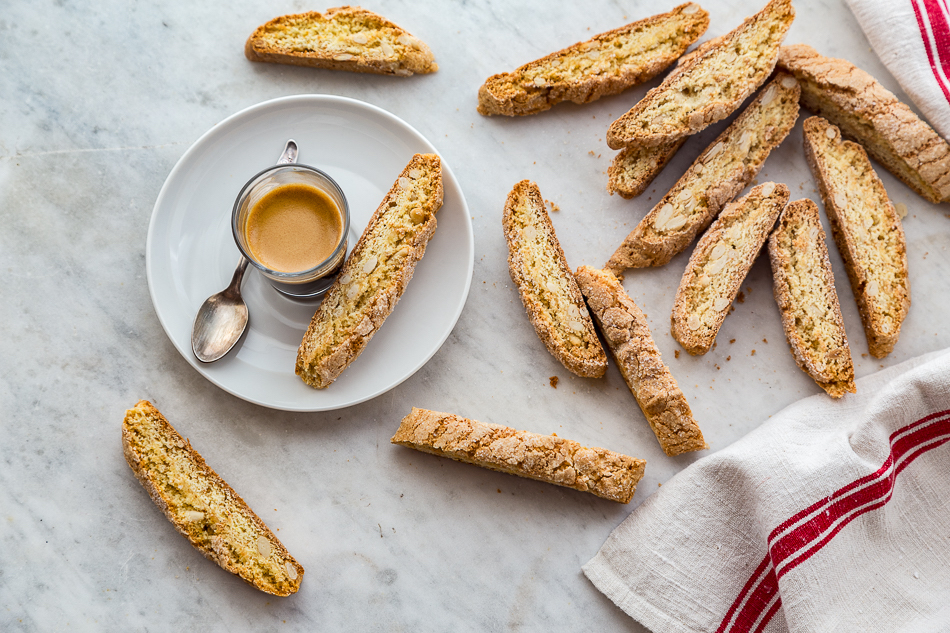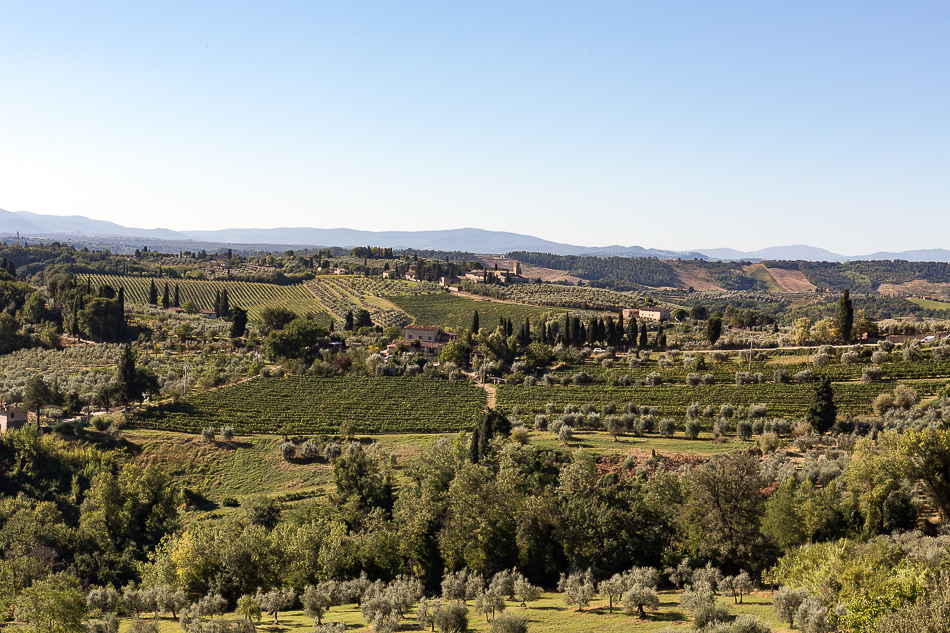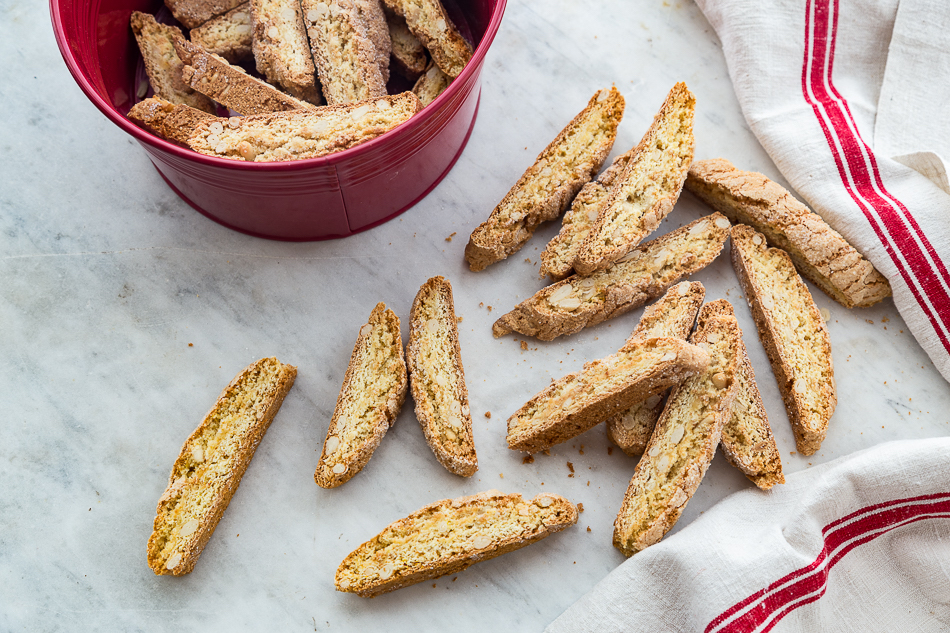21 January 2018
Saffron and Vin Santo have incredibly long and industrious histories in Tuscany. An original recipe for saffron and pine nut biscotti, perfect for the Tuscan after-meal ritual of dipping in vin santo.
A pairing made in Heaven
There are pairings made in heaven: jammy figs and thin slices of salami, Parmigiano Reggiano and a drop of balsamic vinegar, whipped cream and ripe strawberries, Tuscan biscotti and vinsanto.
If you come to Tuscany at any time of the year, in any café or any bakery, in any city or little country village, you will find a tray of biscotti neatly arranged on the counter. They are usually served after a meal, accompanied by a tiny glass of vinsanto.
 Biscotti with espresso - ©? Giulia Scarpaleggia
Biscotti with espresso - ©? Giulia Scarpaleggia
If you want to recreate this traditional match you can bake the biscotti using the following recipe, while you can discover and taste vinsanto in the best Tuscan wineries.
Fattoria Le Pupille, a renown winery in Grosseto for Morellino di Scansano, is the perfect place to experience Tuscan rural chic and taste SolAlto, their unique vin santo.
Grab a bottle of vin santo for your after-meal treats and bake these biscuits, which are spiced with another typical product of Tuscany, saffron.
A brief history of saffron in Tuscany
Saffron, known since the Egyptian times, spread through Europe thanks to Arabic merchants, who brought it to Spain, where it acquired its modern name. Previously known as crocus, it then became asfàr, which means yellow in Persian, then (z)a’fhàran in Arabic, hence the name azafrán in Spanish, saffron in English and zafferano in Italian.
During the Medieval times, a Dominican monk brought saffron to Italy. It was then mainly cultivated in Abruzzo, where the monk was from, near the Trasimeno lake in Umbria, in Sardinia and Tuscany, especially in Fiesole, near Florence, and in San Gimignano.
 Fields of San Gimignano - ©? Giulia Scarpaleggia
Fields of San Gimignano - ©? Giulia Scarpaleggia
Saffron's history in San Gimignano goes back to the 13th century. There are incredibly accurate sources which help us to understand where precisely saffron was cultivated in the countryside around San Gimignano. All along the Middle Age saffron was exported from San Gimignano throughout Italy, then onto the rest of Europe and finally to the Middle East. This route is clear proof of the quality of the San Gimignano saffron, as usually, spices would follow the opposite trail, coming into Europe from the East.
A versatile spice
 Saffron Crocus - by Mohammad Amiri
Saffron Crocus - by Mohammad Amiri
For centuries, the most appreciated quality of saffron was its versatility. Up until the XVI century, it was used to dye wool and silk clothes. There was a strict disciplinary that the dyers, known as pannaiuoli or lanaiuoli, had to follow.
It was also a precious ingredient in pharmacology. There are documents in the Spezieria di S. Fina in San Gimignano attesting its use from the XIV to the XVII century. It is also one of the main ingredients of an elisir vite fine, an elixir of life found in a sealed box from 1631.
The bright colour of saffron also charmed artists and painters, who would use it for stained glasses and in paintings, as we can still admire in the masterpieces of the Sienese and Florentine schools. It was so valuable that in the Middle Ages saffron would replace money or gold to pay the war debts contracted by the municipality during the siege of a castle.
Saffron in the kitchen
Even though the culinary use was not the primary one, saffron acquired a role also in the kitchen over the centuries. It is a valuable condiment, well renowned for its aroma and its distinct flavour, but mainly for its bright colour.
The most ancient document attesting to use of saffron in the kitchen dates back to 1228. Saffron is mentioned along with other ingredients such as meat, eggs and black pepper in an expense account of the Podestà Gregorio, who had lunch cum uno chapone, una ghallina et quatuor fercolis carnium porchi et in ovis et pipere et croco.
A recipe for saffron and pine nut Tuscan biscotti
 Biscotti - ©? Giulia Scarpaleggia
Biscotti - ©? Giulia Scarpaleggia
Nowadays saffron is protected and promoted by a DOP disciplinary in San Gimignano, and it is still a flagship product along with extra virgin olive oil and Vernaccia wine, as in the Middle Ages.
I used saffron from San Gimignano to make the typical local biscotti.
Bis-cotto (biscuit: literally in Italian cooked again), means that it is baked twice in the oven. Just as with ricotta, and ribollita, within the name ‘biscuit,’ its destiny has already been written. With this recipe, you will get biscuits that are slightly softer than normal thanks to a tablespoon of orange honey, another ingredient which perfectly complements the Altesino vin santo.
Their perfect match is, therefore, a glass of vin santo: dunk the biscuits and inhale their spiced aroma before biting into them.
Ingredients
2 tablespoons of lukewarm milk
1 pinch of saffron pistils
2 eggs, whites and yolks separated
230 g sugar + 2 tablespoons to sprinkle over the biscotti
20 g orange honey
250 g flour
½ teaspoon of baking powder
Grated peel of 1 orange
100 g of pine nuts
Instructions
Preheat oven to 200°C.
Soak the saffron pistils in hot milk for about 10 minutes.
Whip the egg whites for about 5 minutes until they are firm, then add the sugar and whip until you get a glossy and thick meringue.
Mix the honey with egg yolks and the saffron milk, then fold the mixture into the meringue.
Now fold gently in the flour sifted with the baking powder and the grated orange peel. Mix in the pine nuts.
Line with parchment paper a large baking pan and with the help of a spoon form two loaves of dough keeping them well separated, about 5 cm wide and 30 cm long. Sprinkle each loaf with sugar.
Bake them for about 15 minutes, then remove them from the oven, let cool for 5 minutes and then cut them slantwise into 2 cm thick slices with a sharp knife, then arrange them cut-side-down in the baking tin and put them back in the oven for about 5 - 10 minutes, until toasted.
You can store them in a tin for several days.
Sources:
I love Toscana, Giulia Scarpaleggia, Food Editore 2012
LA VIA FRANCIGENA I PIATTI TIPICI, storia, architettura e ricette del tratto toscano, Ruggero Larco, Aska edizioni 2014
http://www.zafferanodisangimignano.it/
